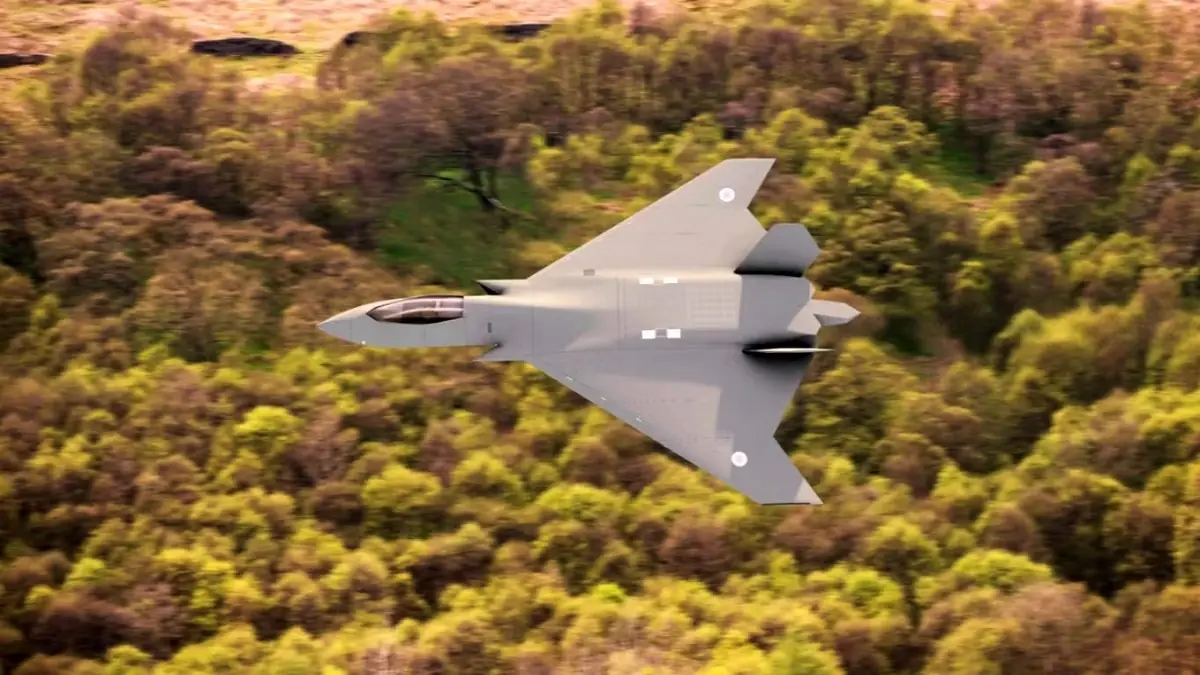Three participating countries in the Global Combat Air Programme (GCAP) – the United Kingdom, Italy, and Japan – unveiled a new conceptual model of their next-generation fighter jet at the Farnborough International Airshow 2024.
Participating together for the first time, the GCAP partners and their leading industry partners – BAE Systems (UK), Leonardo (Italy), and Mitsubishi Heavy Industries (Japan) – showcased significant progress in developing a truly next-generation combat aircraft. The new conceptual model, presented in Hall 5, features an advanced design with a larger wingspan to improve the plane’s aerodynamics.

The combat aircraft, set to enter service by 2035, will be one of the most advanced in the world – compatible, adaptable, and connected. It will feature an intelligent weapons system, an interactive cockpit with software management, integrated sensors, and a next-generation radar that will provide significantly more data than current systems.
GCAP is a strategically important program that unites the efforts of the United Kingdom, Italy, and Japan to create next-generation combat aviation. The program aims to enhance the security, political, and economic prosperity of each country, involving tens of thousands of skilled professionals and developing industrial skills and technologies.
The next-generation combat aircraft developed by GCAP will be known as Tempest in the United Kingdom. Leading system integrators include BAE Systems (UK), Leonardo (Italy), and Mitsubishi Heavy Industries (Japan), along with companies such as Avio Aero, ELT Group, IHI, MBDA, Mitsubishi Electric, and Rolls-Royce.
The Global Combat Air Programme (GCAP) is a multinational initiative involving the United Kingdom, Japan, and Italy, aimed at developing a sixth-generation stealth fighter. The program aims to replace the Eurofighter Typhoon and Mitsubishi F-2, currently in service with the Royal Air Force, the Italian Air Force, and the Japan Air Self-Defense Force.
In December 2022, Japan, the United Kingdom, and Italy announced the merging of their separate sixth-generation fighter projects into the unified GCAP program. This was officially formalized with an agreement in December 2023. The timeline set by the agreement includes the start of official development in 2025, a demonstration flight in 2027, and the deployment of production aircraft by 2035.
Below is an early conceptual model of the aircraft, where you can see significant differences from the one shown above.

Around 9,000 people and over 1,000 suppliers from the three partner countries are involved in GCAP, with significant participation from the United Kingdom, Italy, and Japan. The program aims to boost the economic growth and military capabilities of these nations. BAE Systems, one of the leading companies in the project, has 1,000 apprentices and graduates working on GCAP.
GCAP builds on previous efforts such as the UK’s Tempest program, which was introduced in 2018 to develop a new fighter jet to replace the Royal Air Force’s Eurofighter Typhoons. Italy later joined the Tempest program, and Sweden participated in related technological developments. Japan’s Mitsubishi F-X program, which evolved from the Mitsubishi X-2 Shinshin, is also a foundation of GCAP.
In 2022, the United Kingdom and Japan agreed to jointly develop a new engine for the fighter jet and to explore future air combat technologies, paving the way for GCAP. This collaboration is structured so that each country is responsible for different aspects of the project. Detailed development plans and cost allocations are expected to be finalized by 2024, production is set to begin around 2030, and the first aircraft is expected to enter service by 2035.

There are speculations about expanding GCAP with new members such as Sweden, Saudi Arabia, and Germany. However, each potential addition presents unique challenges. Saudi Arabia’s interest has faced resistance from Japan, while Sweden has postponed its decision to join until 2031. Germany’s participation remains uncertain due to challenges related to its own defense program. In December 2023, the International Governmental Organization for GCAP (GIGO) was established to manage the program, with Japan as the first Director General and Italy as the first head of the business structure.
In summary, GCAP represents a large-scale collaborative effort to develop next-generation combat air forces and capabilities, combining the best technological and industrial expertise of the United Kingdom, Japan, and Italy.
Source: ukdefencejournal









